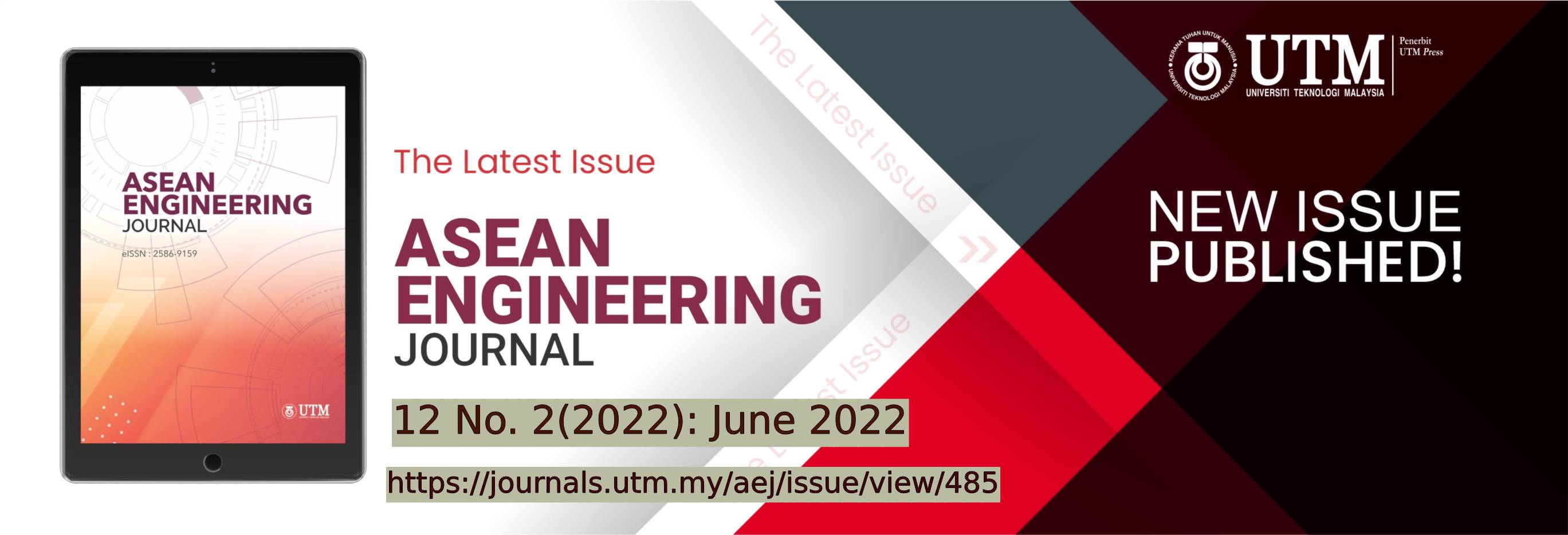RECYCLED PLASTIC COMPOSITES IMPREGNATED WITH ORGANOCLAY AS POTENTIAL GEOGRID REINFORCEMENT MATERIAL FOR PAVEMENT APPLICATION
DOI:
https://doi.org/10.11113/aej.v12.17588Keywords:
Soil reinforcement, recycled plastic, organoclay, geogrid, pavement reinforcementAbstract
Geogrid in pavement application is widely used today, as it mainly functions as soil reinforcement or as a separator. Geogrid is made up of polymers which makes it resistant to degradation. There are different kinds of polymers which are widely used today in a familiar term called plastics. For the past years, plastic aluminum laminates (PAL) and high-density polyethylene (HDPE) plastic bags were used as packaging materials or containers. However, the use of these plastics generates a huge amount of waste, consuming a lot of space and damaging the natural state of the earth. This research aims to utilize these wastes to form geogrid, which will be applied in pavement design. The recycled plastics undergo the melting process, with the aid of the two-roll mill and the compression molding. Then apertures are carved into a grid-like structure. A total of nine mixtures of geogrids were produced, each mixture having a different composition of HDPE, PAL, and organoclay. Tensile test for geogrids by Multi-rib Tensile Method (ASTM 6637) and tensile test for plastics (ASTM D638) are followed to test the geogrids. Based on the data obtained, it showed that higher tensile strength is achieved when the amount of HDPE composition in the material increases. In terms of the addition of organoclay, the mixture with 98% HDPE and 2% organoclay produced the highest tensile strength. The product of the study exhibiting the highest strength was classified as either class 2 or class 3 geogrid.
References
Senate Economic Planning Office (SEPO), Philippine Solid Wastes at a Glance. 2017. Retrieved May 15, 2019 from https://www.senate.gov.ph/publications/SEPO/AAG_Philippine%20Solid% 20Wastes_Nov2017.pdf
Christopher, B. 2010. Geogrids in Roadway and Pavement Systems. Retrieved from http://globalsynthetics.com.au/wp-content/uploads/2016/01/Global-Synthetics-Geogrids-in-Roadway-Pavement-Systems.pdf.
American Society for Testing Materials, 2000. Standard Test Method for Determining Tensile Properties of Geogrids by the Single or Multi-Rib Tensile Method (ASTM D6637/D6637M—15). ASTM International, West Conshohocken, Pennsylvania, United States, Retrieved January 20, 2019 from https://compass.astm.org/EDIT/html_annot.cgi?D6637+15.
Ziegler, M. 2017. Application of geogrid reinforced constructions: history, recent and future developments. Procedia Engineering 172: 42-51, ISSN 1877-7058, https://doi.org/10.1016/j.proeng.2017.02.015.
Elleboudy, A., Saleh, N., and A.G. Salama 2017. Assessment of geogrids in gravel roads under cyclic loading. Alexandria Engineering Journal. 56: 319-326.
Calvarano, L., Leonardi, G., and R. Palamara. 2017. Finite element modelling of unpaved road reinforced with geosynthetics. Procedia Engineering .189(2017): 99-104.
Dave, T and Thaker, T. 2017. Reuse of Plastic Waste in Foundation Soil Reinforcement Application. Retrieved January 19, 2019 from https://www.issmge.org/uploads/publications/1/45/06-technical-committee-26-tc307-04.pdf.
Sarkar, M., Dana, K., Ghatak, S., & Banerjee, A. 2008. Polypropylene-clay composite prepared from Indian bentonite. Indian Academy of Science
de Paiva, L., et al. 2008. Organoclay: Properties, preparation and applications. Applied Clay Science 428-24.
Senoro, D., et al. 2012. Study of recycled plastic aluminates relative to environmental physical stresses as barrier material. Sustainable Environmental Reseearch. 22(6): 387-394.
Senoro, D. 2006. Processing and characterization of recycled plastic aluminum laminates impregnated with organoclay as potential landfill liner. Graduate thesis.
American Society for Testing Materials, 2000. Standard Test Method for Determining Tensile Properties of Plastics (ASTM D638—15). ASTM International, West Conshohocken, Pennsylvania, United States, Retrieved from https://compass.astm.org/EDIT/html_annot.cgi?D638 14.
Das, B. 2010. Principles of Geotechnical Engineering (7th Edition). Cengage Learning, USA.
Fraser, I., Elsing, A., Stucki, M., Busser, S., Itten, R., Frischknecht, R., & Wallbaum, H. (n.d.). Comparative Life Cycle Assessment of Geosynthetics Versus Conventional Construction Materials, A Study on Behalf of the EAGM, Case 4, Soil Retaining Wall.
Zhang, J., Hurta, G., and ASCE, P.E. 2008 Comparison of Geotextile and Geogrid Reinforcement on Unpaved Road. ASCE.
Jlassi, K., Chehimi, M., and S. Thomas. 2017. Clay-Polymer Nanocomposites.
















